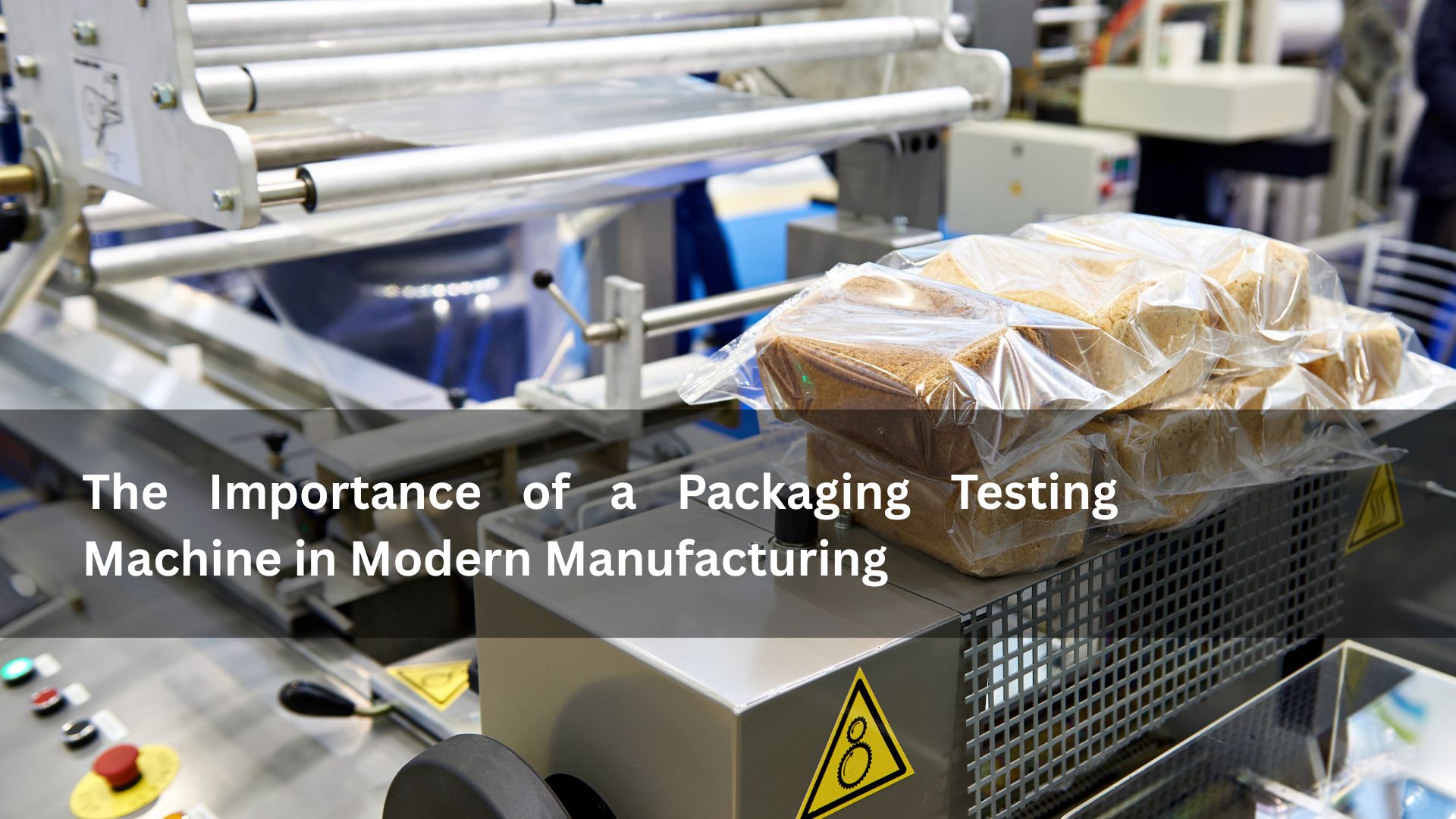Understanding the Role of a Packaging Testing Machine
A Packaging Testing Machine is a specialized device used in laboratories and production facilities to assess how packaging performs under stress. These machines test the physical properties of packaging components such as corrugated boxes, plastic wraps, bottles, cans, cartons, and flexible pouches.
The goal is to simulate scenarios the packaging will encounter in real life. These can include pressure from stacking, rough handling, sudden impacts, and changes in temperature or humidity during shipping. By analyzing the results, manufacturers can determine whether the packaging will effectively protect the product until it reaches the end user.
For example, an electronics manufacturer might use a Packaging Testing Machine to test whether its box and foam insert can absorb shocks during transportation. A beverage company may want to ensure its plastic bottles won’t burst under stacking pressure. A well-calibrated machine can perform these assessments with high precision, delivering accurate results that help optimize packaging design and material selection.
How Packaging Testing Machines Improve Product Integrity
Product integrity doesn’t end on the production line; it continues through distribution, storage, and eventual use. If the packaging fails, the product may be damaged, contaminated, or rendered unusable — leading to customer complaints, returns, and even safety issues.
Using a Packaging Testing Machine significantly reduces these risks. By subjecting packaging prototypes to various tests, companies can identify weak points and make adjustments before mass production begins. These insights are invaluable for:
Preventing Damage: Detect and correct design flaws that could lead to product damage in transit.
Reducing Waste: Avoid over-packaging by understanding the actual strength required to protect the product, leading to more sustainable and cost-effective solutions.
Ensuring Consistency: Maintain packaging quality across large production volumes, avoiding costly defects.
Meeting Standards: Comply with international testing standards (like ASTM, ISO, ISTA), which are often required by retailers and logistics partners.
For industries such as pharmaceuticals and food, where even minor packaging defects can compromise safety, the use of a Packaging Testing Machine is not optional — it’s mandatory.
Different Types of Packaging Testing Machines and Their Applications
There are various types of Packaging Testing Machines, each designed for specific testing parameters. Selecting the right type depends on the nature of your product and how it’s packaged. Here are some common types:
1. Compression Testing Machine
This machine measures the resistance of a package to compressive forces. It’s used to determine how much weight a box or carton can handle before collapsing. This is especially useful for stacked products in warehouses or during transportation.
2. Drop Tester
A drop tester simulates the impact a package experiences when it falls from a certain height. It evaluates the structural integrity of the packaging and its ability to protect the contents inside.
3. Burst Strength Tester
Burst strength testers determine the force required to rupture the walls of a packaging material. It’s commonly used for paper, corrugated boards, and cartons to ensure they can resist internal pressures during handling.
4. Vibration Testing Machine
Simulating the vibration that occurs during transportation (on trucks, ships, or planes), this Packaging Testing Machine checks if packaging remains intact or if internal contents shift or break.
5. Environmental Testing Chambers
These machines test packaging under varying temperatures and humidity levels. It helps manufacturers understand how their packaging performs in extreme weather or storage conditions.
Each of these machines provides critical data that can influence packaging choices and materials used, ensuring products remain safe and undamaged throughout their lifecycle.
Real-World Example of Packaging Testing Machine: Electronics Packaging
Let’s consider a real-world scenario involving a company that ships high-end consumer electronics internationally. If they skip testing and the packaging fails to absorb impact during air transport, the internal components of their devices may be damaged. This not only leads to a return or replacement but also damages brand reputation.
By incorporating a Packaging Testing Machine during the design phase, the company can test how well the packaging absorbs shock during drop and vibration simulations. It can also verify the stacking strength for warehouse storage. With this data, they can make informed changes — like increasing the thickness of foam inserts or changing box dimensions — before sending thousands of products into distribution.
The end result is fewer returns, happier customers, and a more trusted brand.
The Financial and Environmental Benefits of Packaging Testing Machine
Beyond product protection, a Packaging Testing Machine can have measurable financial and environmental benefits:
Reduced Returns and Refunds: Fewer packaging failures mean fewer products returned due to damage.
Lower Shipping Costs: Testing helps optimize packaging size and weight, lowering freight expenses.
Less Material Waste: Data-driven packaging design prevents overuse of cardboard, plastic, and foam.
Improved Sustainability: As sustainability becomes a competitive advantage, packaging that uses fewer resources but still performs well is in high demand.
For companies looking to adopt greener practices, Packaging Testing Machines enable smarter material selection without compromising safety.
Conclusion: A Smart Investment on Packaging Testing Machine for Quality Control on
In conclusion, a Packaging Testing Machine is a vital tool for any manufacturer that wants to ensure the safety, efficiency, and reliability of their packaging. In a world where shipping distances are growing and customer expectations are higher than ever, packaging failures are simply not acceptable.
These machines empower businesses to test under real-world conditions, meet regulatory standards, and design packaging that’s both cost-effective and sustainable. Whether you’re dealing with fragile glassware, perishable goods, or industrial equipment, a Packaging Testing Machine helps you stay competitive in an increasingly quality-driven marketplace.
Investing in a Packaging Testing Machine isn’t just a one-time decision — it’s an ongoing commitment to excellence, customer satisfaction, and operational success.










